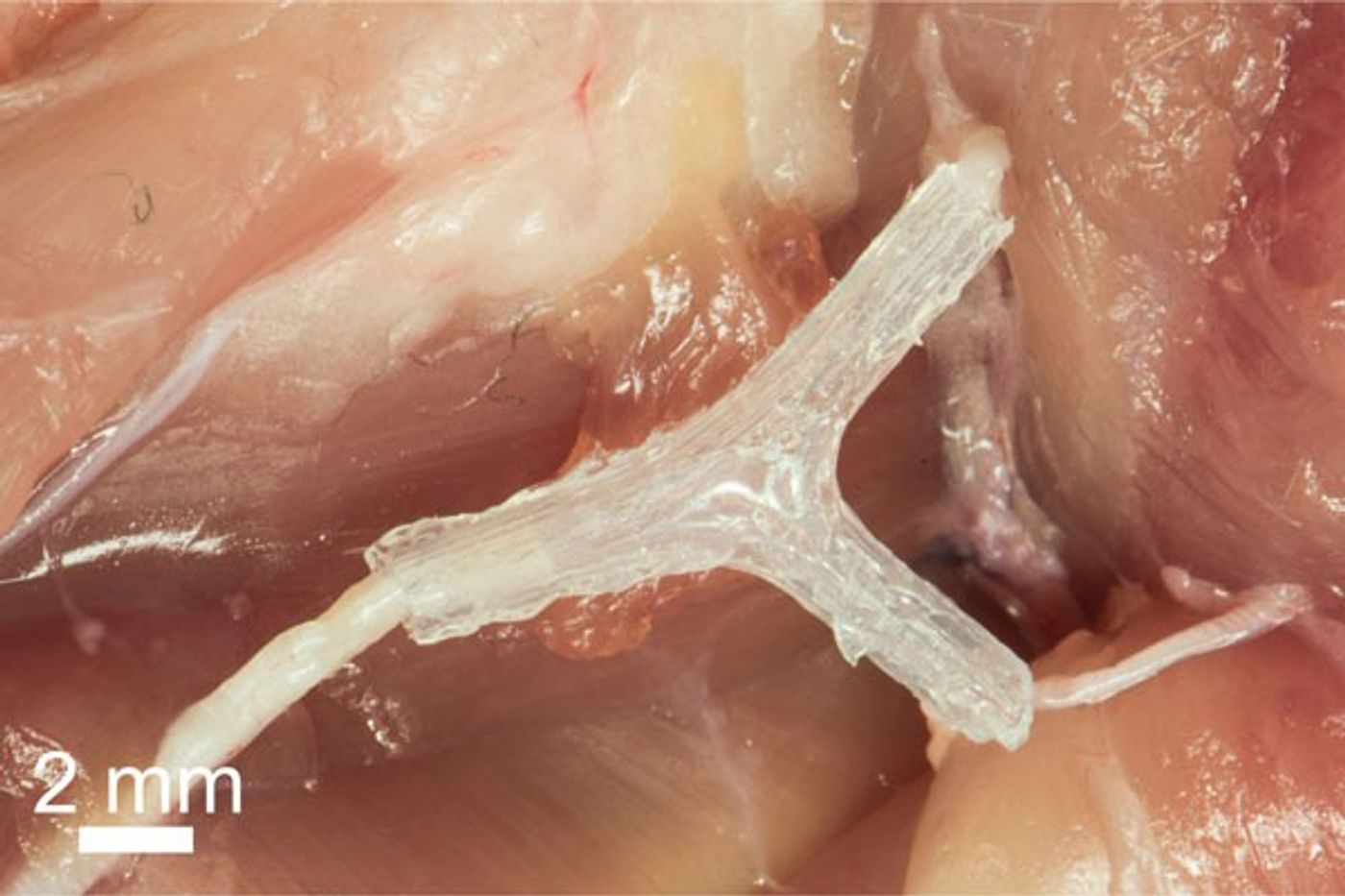The nervous system in the human body is incredibly detailed and complex. From the tiniest neurons in the brain, to the spinal cord and all the peripheral nerves that extend out to all areas and from there to microscopic nerve endings that pick up the slightest touch or sound, it’s a system that is vital. Much of it remains a mystery though, and neuroscientists and researchers work every day on diseases and injuries that affect the nervous system.
The peripheral nerve system is one area where much more needs to be done. Repair to peripheral nerves is tricky and not always possible. Depending on the trauma suffered, nerves can regenerate but this often requires nerve grafts. Harvesting nerves from other parts of the body can be done, but is limited by size and shape of the donor area in relation to the harvested area. Even if the graft is successful, the area where the nerves were taken from can be damaged as well. Essentially grafting is robbing Peter to pay Paul.
New research could provide a high tech treatment option for some forms of nerve regeneration. Currently, if a damaged nerve branches out, grafting it with donor nerve tissue is not all that successful. Scientists from the University of Minnesota, Virginia Tech, University of Maryland and Johns Hopkins came up with a process to guide nerve regeneration, using a kind of scaffold. Much like how a building is erected, the team was able to use a synthetic pathway, printed in a 3D printer, to guide nerves.
Dr. Michael C. McAlpine, a mechanical engineering professor, was the team lead, at the University of Minnesota.
In a press release about the work he said, “This represents an important proof of concept of the 3D printing of custom nerve guides for the regeneration of complex nerve injuries. Someday we hope that we could have a 3D scanner and printer right at the hospital to create custom nerve guides right on site to restore nerve function.”
How can materials that come out of a 3D printer be used to grow and guide nerve tissue? Researchers placed biochemical materials like
growth factor and glial cell-line derived neurotrophic factor into the printed guide to help the nerves thrive.
Because items that printed in 3D are composed of several micro-layers that are copied from detailed digital models, the structures to guide the nerves can be incredibly complex. For the study, the team used the sciatic nerve in rats because it a mixed system with both sensory and motor nerves. Using light imaging, a cast of the nerve was created, scanned from different angles and a 3D model was created and subsequently printed. When implanted in the rats the team was successful in getting the sciatic nerve tro grow and branch out in different directions, closely resembling the anatomical structure of the original nerve. They were also able to take the project further and actually use the 3D printed nerve guides to bridge gaps in the nerve pathways of the rats. Over a period of three months the rats’ showed better movement and their walking was improved.
The research was partially funded by the National Institute of Neurological Disorders and Stroke and the National Heart, Lung and Blood Institute and was published in the online journal Advanced Functional Materials on September 18, 2015. See the video for more information.









